Signs of damaged drywall include cracks, holes, water damage, or mold growth. If the damage is minor, a repair may be sufficient. However, more extensive damage or structural concerns may require replacement. We’ll help you assess the situation and recommend the best course of action.
Drywall is a panel made of gypsum board, which is easier to install and less labour-intensive than plaster. Plaster, on the other hand, is a wet mixture that is applied to a surface and dries to form a hard, durable finish. Both options have their advantages and disadvantages depending on your project’s needs and desired aesthetic. We provide a wide range of plastering options to finish drywall installations.
To protect furniture or belongings in the work area from dust and debris, it’s recommended that they be moved or covered. Your drywall contractor may also guide how to prepare the space best before work begins.
It’s essential to allow the joint compound used in drywall finishing to dry thoroughly before painting. This usually takes at least 24-48 hours, depending on the humidity and temperature. Your contractor will let you know when it’s safe to begin painting.
Look for a contractor with a solid reputation, positive customer reviews, and relevant experience in the type of project you’re planning. Request quotes from multiple contractors, and ask for references to ensure you’re making an informed decision.
Insulation helps regulate temperature, reduce energy consumption, and improve soundproofing within a space. A properly insulated wall or ceiling can contribute to a more comfortable and energy-efficient home or commercial space. Your drywall contractor can recommend the best insulation materials for your specific needs.
Residential drywall services typically focus on home projects, such as new construction, renovations, or repairs. Commercial services cater to businesses and larger-scale projects, which may involve specialized materials, fire-rated drywall, or more complex installations. A professional drywall contractor can provide the appropriate services for your specific needs.
Yes, a professional drywall contractor can recommend and install soundproofing solutions, such as specialized acoustic drywall or insulation materials, to reduce noise transfer between rooms or from external sources. Discuss your soundproofing needs with your contractor to determine the best approach for your project.
Depending on the scale and type of your project, you may need to obtain permits before beginning work. This is especially important for new construction or extensive remodeling projects. Your drywall contractor should be familiar with local building codes and regulations and can guide you through the permit process if necessary.
Professional drywall contractors use various techniques to minimize dust and debris, such as using dust barriers, drop cloths, and proper ventilation. They also typically clean up the work area at the end of each day and upon project completion. If you have concerns about dust, discuss them with your contractor before the project begins to ensure appropriate precautions are taken.
The thickness of drywall needed depends on your project requirements and local building codes. Common thicknesses are 1/4-inch, 3/8-inch, 1/2-inch, and 5/8-inch. Your contractor can help you choose the appropriate thickness based on factors like wall height, stud spacing, and soundproofing needs.
Yes, there are eco-friendly drywall options on the market, such as those made from recycled materials or those with low VOC (volatile organic compound) emissions. Discuss your environmental preferences with your contractor, who can recommend suitable eco-friendly drywall products for your project.
If your home was built before the 1980s, it’s possible that the drywall or joint compound contains asbestos. A professional asbestos testing company can analyze samples from your home to determine the presence of asbestos. If asbestos is found, it’s crucial to hire a licensed abatement professional to handle removal safely.
While some drywall contractors may have experience with electrical and plumbing work, it’s generally best to hire licensed electricians and plumbers for these tasks. This ensures that all work is performed safely and in compliance with local building codes.
Preparing your space for a drywall project typically involves removing any furniture, decorations, and other items from the work area. You may also need to remove or cover flooring, and your contractor may install dust barriers to protect the rest of your home. Your contractor will provide specific guidance on how to prepare your space.
Fire-resistant drywall, also known as Type X or Type C, is specially designed to provide increased fire protection. Installing this type of drywall in areas like garages, utility rooms, and around fireplaces can help improve your home’s fire resistance. Your contractor can recommend appropriate fire-resistant drywall products for your project.
Joint compound is used for taping and finishing drywall seams, while spackle is a thicker material designed for filling small holes and dents. Although they may appear similar, it’s essential to use the appropriate product for each task to ensure a high-quality, durable finish.
While it’s possible to paint over wallpaper, it’s not always the best solution. Painting over wallpaper can lead to uneven surfaces, peeling, or bubbling. Removing the wallpaper and installing drywall can provide a smoother, more durable surface for painting. Discuss your options with a professional contractor to determine the best approach for your specific situation.

